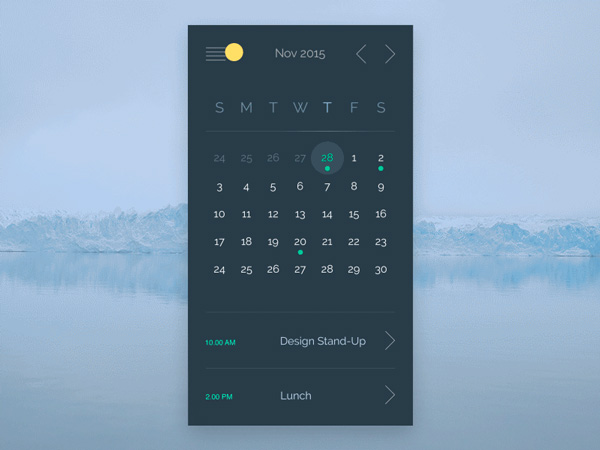Most designers are, oftentimes, expected to maintain an amount of sensibility toward interfaces that are more well-crafted; however, there are some experiences that actually require virtually little to no new pixel work at all.
This is due to the fact that any new kind of interface requires some amount of effort in order to make everything work correctly.
Design has also never really been considered to be an art form that is truly as “in your face” as some may think it is. In fact, good design is invisible. Designers typically spend vast amounts of time working on projects that others may not seem to find very exciting, which is something that can actually be a good thing since, to most designers, great design is invisible.
While design is invisible – as previously mentioned – it is also visible. There’s really no denying that. However, the different tools and techniques that a designer uses should not always be as visible. Users always want to feel like that are engaging and interacting with what they are looking at without really understanding why they are doing so. This is what is known as invisible design.
How to Create Invisible Design
To create invisible design, begin by creating a clear message while, at the same time, avoiding any kind of pointless ornamentation. It’s important to keep in mind that in terms of design, less is always more.
One of the biggest nightmares a designer can ever come across is a brilliantly designed application according to the latest app trends, but with no one using it, only to find out that the needs of the user were not kept in mind during the design process itself.
Design is something that should never create more problems for a user. Rather, design is something that should exist to solve any problems that a user may be having with something, as well as communicating different features in a way that is direct and clear.
So have all of the most beautiful features that you want but, at the same time, keep them invisible in order to provide the user with the most pleasant experience possible. As a designer, the best kind of compliment that you can receive is the absence of a compliment, which means that you have done your job and have essentially remained invisible to the user.
Don’t Limit Yourself
Whenever someone approaches a project with an idea of what the end solution should look like, this is a situation that can actually hamper the overall sense of innovation. Instead, take the time to ask yourself what would happen if you had absolutely no constraints holding you back and come up with a more practical solution that way.
Make Everything Easier
Do your best to do away with as many unnecessary options as you can. Too many of these kinds of options can make the design process much more difficult to navigate through.
Use Color To Point The User In The Right Direction
People enjoy color because it creates associations and connections that are emotional, both consciously and subconsciously. Take as much time as needed to select the right color palette, keeping in mind how your users may feel while looking at a particular color.
Don’t Let Your Ego Get In The Way
We always want to do our best to leave our own personal mark on a product. However, when we step back and eliminate our ego, we can focus more instead on showing what the product is, how it works, and how the lives of our users can be improved if they choose to use it.
Inspire Yourself From Others, But Don’t Copy
Don’t let yourself get seduced by the design that someone else comes up with. Sure, you can take some inspiration from it to create your own original idea, but never, ever directly copy someone else’s work. Furthermore, you also don’t want to take pieces from someone else’s design and place them onto your own, otherwise you’ll end up with a jumbled-up mess.
Use The Right Copy

Try to come up with the right wording to convey the way that you want people to feel whenever they look at the design that you come up with. In addition, consider the overall rhythm of the words that you include. For instance, read them out loud and see how they sound to you. If they don’t sound right to you, then chances are they likely won’t sound right to your users as well.
Use The Proper Typography

Typefaces also have different meanings to different people, as different styles have been known to convey different types of feelings in the individuals who look at them. If you are unsure of which ones to use, stick with the styles that are the most simple, such as simple serifs or sans serifs.
Certain UI Elements
In terms of invisibility, user interface elements and icons can truly work wonders. These can tell users exactly how a site works, as well as how to interact with it. Invisibility comes into play when the user does not even have to take the time to think about how the site works.
Ending thoughts
An overall sense of credibility can be achieved thanks to how something looks, moves, reacts, sounds, feels, etc. When it comes to designing something, you’re essentially attempting to trick someone’s brain into thinking that what they’re looking at is actually real, even though it’s clearly an illusion.However, the human brain is constantly opening up to the idea of paying attention to things that are much more interesting time and time again.





